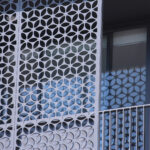What is the use of cement board and what are cement board screws
A cement board is a construction material used as a base layer in walls and floors. It is made of Portland cement, water, and a fiber reinforcement material. The fiber reinforcement can be paper or fiberglass.
Cement boards are used in a variety of applications, including:
As a base layer for tile in wet areas such as showers and tub surrounds
As a base layer for exterior siding
As a fire-resistant barrier in walls and ceilings
Cement boards are available in a variety of thicknesses, ranging from 1/4 inch to 1 inch. The most common thickness is 1/2 inch.
Cement board screws are used to attach cement boards to a variety of substrates, including wood, metal, and drywall. Cement board screws are available in a variety of lengths, ranging from 1/2 inch to 3 inches. The most common length is 1 1/2 inches.
Can You use nails on cement board?
Cement board is a construction material typically used as a substrate for tile. It is made of Portland cement, aggregate, and glass mesh. While cement board is very strong, it is also very brittle. Nails can easily crack and break cement board, so it is not recommended to use them. Instead, use screws or other fasteners specifically designed for use with cement board.
5 Steps in installing screws or fasteners in cement boards
Installing screws or fasteners in cement boards can be a tricky process, but following these five steps will help ensure a successful installation:
Like Us on Facebook!
1. Choose the right type of screw or fastener for your project. There are a variety of screws and fasteners available that are specifically designed for use with cement boards. Be sure to select the correct type for your project.
Subscribe Us on YouTube!
2. Drill a pilot hole. Use a drill bit that is slightly smaller than the diameter of the screw or fastener you are using. This will help to prevent the screw or fastener from splitting the cement board.
3. Insert the screw or fastener. Start the screw or fastener into the pilot hole and then tighten it until it is snug. Be careful not to over-tighten, as this can also cause the cement board to split.
4. Add a washer (if using). If you are using a washer, place it over the head of the screw or fastener before tightening. This will help to distribute the load and prevent the screw or fastener from pulling through the cement board.
5. Repeat as necessary. Repeat steps 2-4 until all of the screws or fasteners are in place.
Things to avoid while using screws in cement boards
When working with screws, it is important to avoid over-tightening the screws. This can cause the screw to strip the hole, making it difficult to remove the screw later. It can also cause the cement board to crack.
It is also important to avoid using screws that are too long. This can cause the screw to penetrate through the other side of the cement board, making it difficult to patch later.
When attaching screws to the cement board, it is important to use a drill bit that is slightly smaller than the screw. This will create a snug fit and help to prevent the screw from stripping the hole.
Type of screws for cement boards
Cement boards are one of the most versatile and durable building materials available, and they can be used for a variety of applications. While cement boards are typically used as sheathing for walls and floors, they can also be used for siding, roofing, and even countertops.
There are a few different types of screws that can be used to fasten cement boards, and the type of screw that you use will depend on the application.
For most applications, cement boards can be fastened with either 1-1/4″ course thread drywall screws or 1-5/8″ course thread drywall screws. These screws are designed to penetrate the cement board and create a secure connection.
If you are using cement boards for siding or roofing, you may need to use a different type of screw. For these applications, you will need to use a screw that is specifically designed for siding or roofing. These screws are typically longer and have a different head design than drywall screws.
When selecting a screw for cement boards, it is important to choose a screw that is made from high-quality materials. Stainless steel or galvanized screws are a good option for most applications.
It is also important











